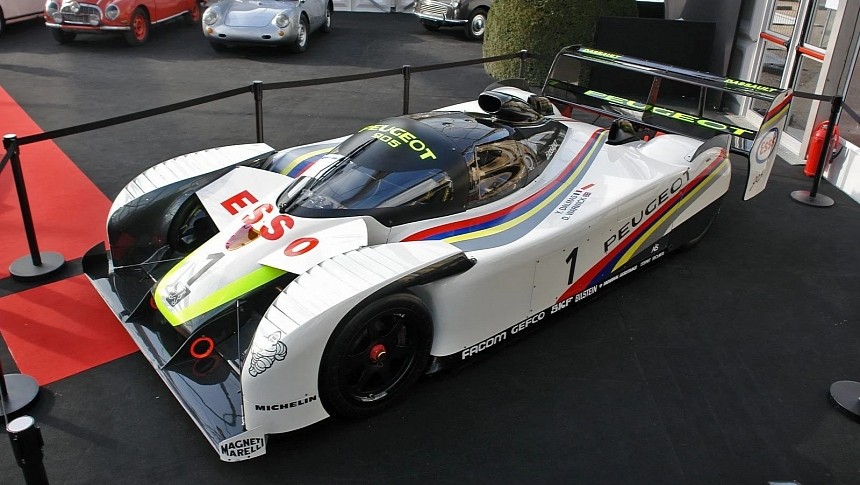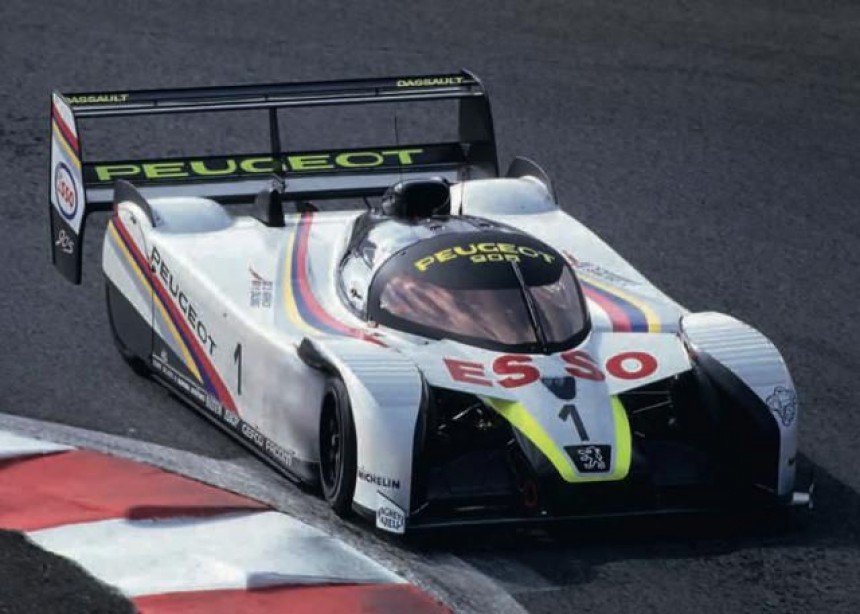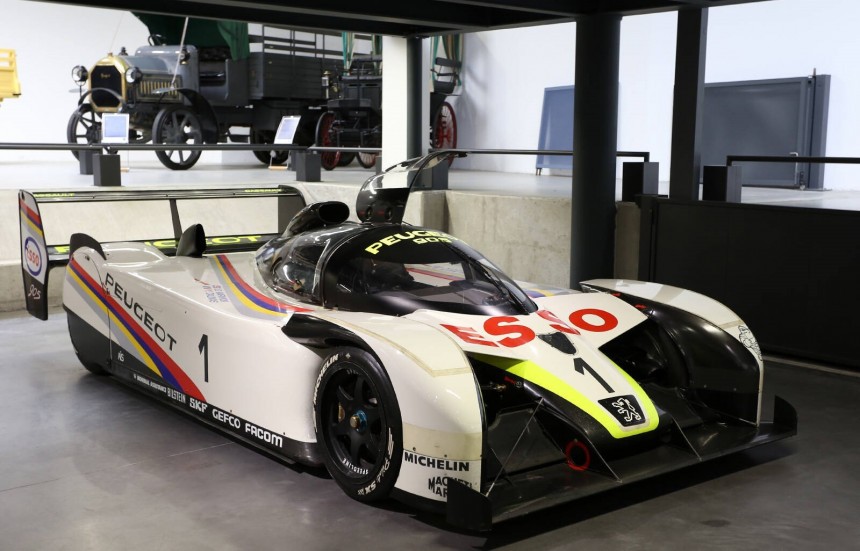Motorsport history is filled with cars that just blew the competition away. Yet it is also filled with cars that never got the chance to show what they can do. The stunning Peugeot 905 Evo 2 Supercopter is one such vehicle. The 905 Evo 2 was an evolution of the 909 Evo 1, and it arrived on the scene in 1992, at a time when Group C racing regulations were still in effect. Unfortunately, it never got to race, thanks to the death of the very series it was meant to compete in.
Instead, it was confined to the history books and became nothing more than a museum piece. Peugeot would go on to focus on the Le Mans 24 Hours race for 1993, with an upgraded version of the previous Evo 1. To everyone else, the potential of the Evo 2 will always be a mystery.
Having won Le Mans in 1992 with a 1-3 finish, Peugeot looked to make even more gains. The priority was simply to extract as much downforce as possible from the 905, taking things even further from the Evo1 905 that it was meant to succeed. Gone was the rounded nose design of the previous car. In its place was a high nose with broad openings between the wheel arches. It was a radical look, one that was totally different from the other Group C racers from that era.
The amount of airflow that the 905 Evo2 was meant to manage was extraordinary. The car had nearly fully flat sides, with underbody skirts and huge Venturi channels to create as much downforce as possible - these tunnels were on either side of the cockpit. Peugeot also worked hard to ensure that the body of the car was as clean as possible. Meanwhile since its 40-valve V10 engine was already so dominant with its 700 hp, there was no need for the company to change this.
The car went through its fair share of testing in 1992 before it made its debut at the final round of that year's WSC season at Magny-Cours. Peugeot had already won the title, so they were happy to race the Evo2 simply to see how good it was. Amazingly, the Evo1 B proved to be the faster of the two cars, meaning the Evo2 was benched for the rest of the weekend, after practice. Of course, the series was on its last breath, and thanks to a dwindling grid and shortened calendar, it was canned for the 1993 season. This meant the Supercopter never had the chance to race.
Much of Peugeot's technology from sportscars found its way into its F1 project, with them linking up with McLaren for the 1994 season. The design of the Evo2, though, did influence some sportscars in later years. The evolution of the Bentley Speed 8 that won Le Mans in 2003 is one such car that took inspiration from the Peugeot.
There is very little tangible information as to what happened to the Evo2 after its appearance at Magny-Cours in 1992. One chassis is on display at the LeMans museum, with the others likely to remain in the hands of Peugeot themselves. The fact we never got to see what this car could do is a huge shame. Ironically, the whimpering end that befell the Group C regulations and the WSC is akin to what happened to LMP1 and its rules at the start of the 2020s prior to the new hypercar rules. Bottom line, we will likely never see a top-level prototype as radical looking as the Supercopter ever again. It truly was a one-of-a-kind racecar.
Why Peugeot developed the eye-catching 905 Supercopter
Peugeot was looking to take a giant leap over its rivals in terms of sportscars, with the 905 first introduced back in 1991. The company had taken a bit of a beating early that year, with the Jaguar XJR-14 able to get the better of them, although the French manufacturer did sneak in a win at that year's Suzuka round of the World Sportscar Championship. A disappointing Le Mans 24 Hours saw Peugeot heavily revise the car, creating the 905B, which would go on to win at Magny-Cours and Mexico, both 1-2 finishes for the team.Having won Le Mans in 1992 with a 1-3 finish, Peugeot looked to make even more gains. The priority was simply to extract as much downforce as possible from the 905, taking things even further from the Evo1 905 that it was meant to succeed. Gone was the rounded nose design of the previous car. In its place was a high nose with broad openings between the wheel arches. It was a radical look, one that was totally different from the other Group C racers from that era.
The 905 Supercopter debuted at the end of 1992
The car went through its fair share of testing in 1992 before it made its debut at the final round of that year's WSC season at Magny-Cours. Peugeot had already won the title, so they were happy to race the Evo2 simply to see how good it was. Amazingly, the Evo1 B proved to be the faster of the two cars, meaning the Evo2 was benched for the rest of the weekend, after practice. Of course, the series was on its last breath, and thanks to a dwindling grid and shortened calendar, it was canned for the 1993 season. This meant the Supercopter never had the chance to race.
How good could the 905 Supercopter have been?
Peugeot abandoned the Supercopter and focused on further improving the Evo 1. The all-downforce design of the Supercopter wouldn't have fared so well at Le Mans, and the manufacturer did manage a clean sweep of the podium at that year's race with the 905 Evo1. The fact the Supercopter never raced has always led to speculation as to how good it might have been. As for its one-off debut, it didn't reveal enough of its true capabilities, with Peugeot clearly not having the time to properly develop the Evo2.Much of Peugeot's technology from sportscars found its way into its F1 project, with them linking up with McLaren for the 1994 season. The design of the Evo2, though, did influence some sportscars in later years. The evolution of the Bentley Speed 8 that won Le Mans in 2003 is one such car that took inspiration from the Peugeot.














